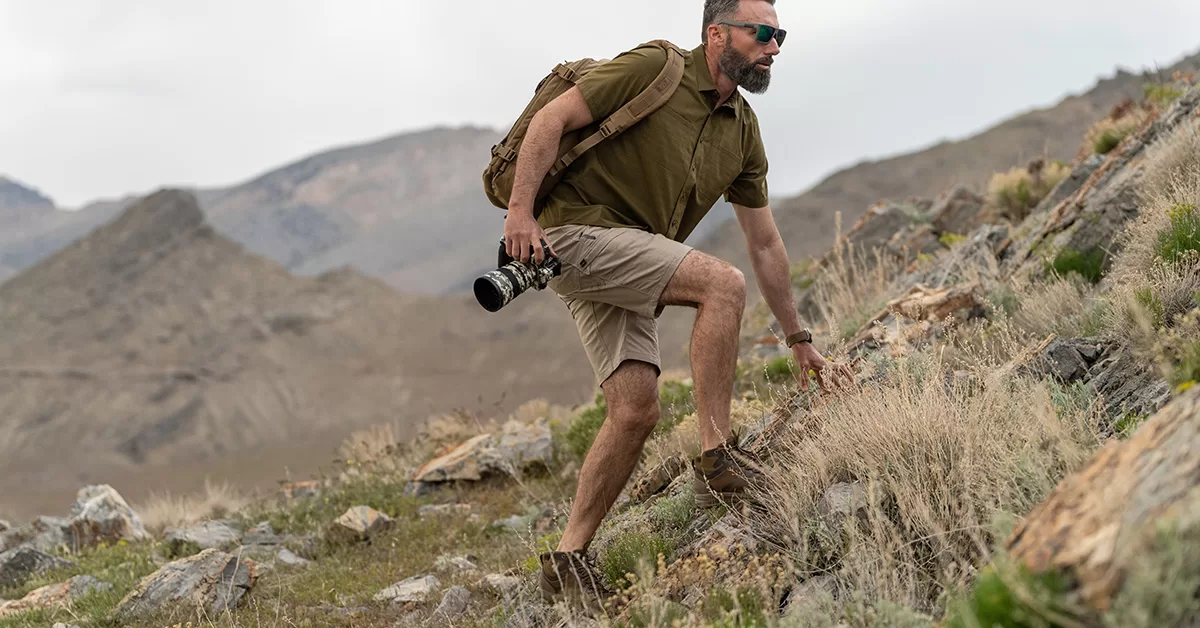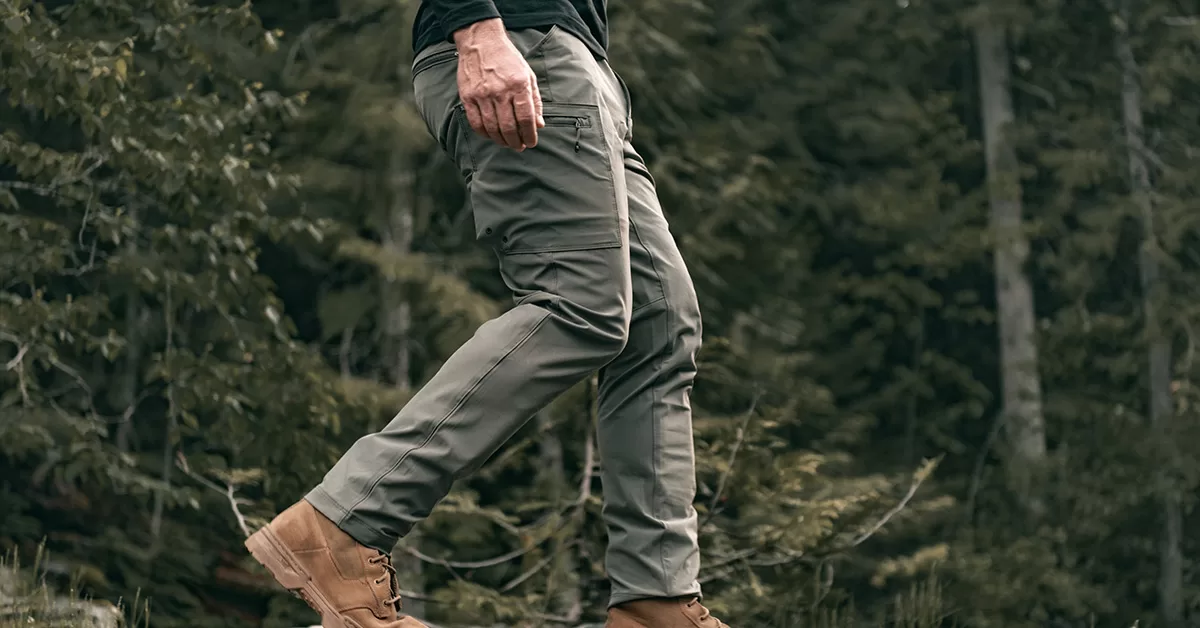How to Layer & Be Prepared for All Weather Conditions
Whether it’s your job that keeps you outside or you enjoy outdoor activities like hiking, hunting, and fishing, knowing how to dress appropriately for the weather conditions is critical. However, we know that the weather is ever changing, cool and gray one minute, sunny and humid the next.
So how do you regulate your temperature and comfort throughout the day? By adding or subtracting layers of clothing, aka layering.
When it comes to layering your clothes, weather is not the only element to consider. A variety of factors can play a role in how you choose to layer for the day ahead. These include the activities you will be doing, how hard you are going at them (your exertion levels), and even your metabolism.
Whether dressing for hot conditions, freezing conditions, or anything in between, three main layers compose a solid layering strategy – a base layer, a middle layer, and an outer layer. And each of those three layers has a specific function in terms of what it provides for your comfort.
Base Layer
The base layer is the layer closest to your skin. It is what you can think of as the underwear layer. Its function is simple, yet important – wick moisture off your skin to keep you dry and comfortable.
In colder or rainy conditions, a solid base layer keeps your skin dry and helps you stay warm. Base layers are constructed of a wide range of fabric materials, from synthetic to natural fibers. Synthetic options include polyester and nylon, while merino wool is a prime example of a natural fiber.
Base layers also come in different weights – lightweight, midweight, and heavyweight. The heavier the weight and fabric, the warmer you will be.
When dressing for warm-weather conditions, it is imperative your base layer wick away moisture such as sweat. This is true for both shirts and underwear. To ensure you stay as dry and cool as possible, try to avoid traditional cotton base layers, as these retain moisture, as well as body odors. Polyester briefs and a short-sleeve synthetic t-shirt are an ideal warm-weather base layer combination.
Conversely, if you are dealing in chilly weather, a midweight polyester long underwear top and bottom combination should keep you warm and dry.
For an added layer of protection against the sun, look for UPF-rated base layers.
Middle Layer
The middle layer is for insulating your body against the cold and keeping it warm. In warm-weather conditions, you may only need that initial, moisture-wicking base layer. Or if the weather is cool in the morning, a middle layer may be needed until the sun heats things up.
An insulating middle layer will help your body retain the heat it gives off. As with the base layer, there are many options, both synthetic and natural. Synthetic options include polyester fleece which dries quickly when it gets wet. It also breathes well, however, in windy conditions, you won’t find much resistance as the wind blows through it.
Another good option is a down insulated jacket. Pound for pound, it provides more warmth than other insulating materials. It is considered a shell material, so it does offer protection in terms of water and wind resistance. But when it gets wet or damp, its insulating power goes down.
A third choice when layering for wintry weather is a synthetic insulated jacket. What makes this such a popular option is that unlike down, it does retain its insulation properties even when damp, making it a good rain option.
A lightweight fleece jacket, midweight fleece pants, and synthetic hiking pants all make great options for a middle layer. For warm-weather conditions, consider nylon hiking pants or shorts and a lightweight wind jacket.
Outer Layer
When it comes to layering for freezing weather or how to layer for the snow, the final piece of the puzzle is a sturdy outer layer. This shell layer will protect you from the most severe elements.
Any time spent in tough conditions requires a well-constructed outer layer. Once rain, snow, or wind penetrate that outer and middle layer, you could be in serious trouble and at risk for hypothermia.
How do shell layers work? Well, all shell layers are now treated with some form of DWR, or durable water repellent, which helps water bead up and roll off clothing.
Not all outer, or shell, layers are created equal. They vary in both functionality and affordability. The most expensive choice is a shell that is both waterproof and breathable. This option is the one you need when you are really in the thick of it, i.e., blizzard or squall conditions.
A good all-around option is a water-resistant shell that offers breathability. A more affordable option, it is ideal for slightly wet and windy conditions where your activity levels are higher.
Soft shell jackets are all about breathability and offer less in terms of protection from the cold. If you are participating in more stress inducing activities with a higher aerobic element, a soft-shell jacket allows you ease of movement with protection against light wind and rain.
Rounding out the outer layer category is waterproof, non breathable shells. These are constructed of a coated nylon which provides ultimate protection from wind and rain, but its lack of breathability means it is best suited for light activities such as fishing.
Besides protection from the elements, your outer layer should be able to withstand thorns, brush, and tree branches. Other factors to consider include its weight and packability. In other words, if there is a good chance you’ll take it off at some point, you want to make sure you can pack and carry it easily.
Layering for Cold Weather Accessories
Now that you’ve rocked out your base layer, middle layer, and outer layer, it is time to take it home with layering accessories. Start with two good pairs of gloves – a layering pair and a thicker, insulated pair. Use the layering pair for those cool mornings when you need some protection, but also need to be able to use your hands. Opt for the insulated gloves for colder weather when warmth is the priority.
Neck gaiters provide a layer of warmth around your neck which cannot be underestimated. If the neck gets cold, it is likely the rest of you gets cold, too. Select a neck gaiter that can be worn in diverse ways such as a bandana, around your neck, and over your face.
Many people get most of this right, but then neglect their choice in socks, choosing a regular old pair of cotton socks. But not you. Instead, choose a quality pair of merino wool socks which wick away moisture, helping keep your feet dry and warm in frigid conditions.
Whether you’re camping in the mountains, hiking dusty trails, or working with your hands outside in tough conditions, layering clothes will ensure you can control your temperature and comfort all day long.





